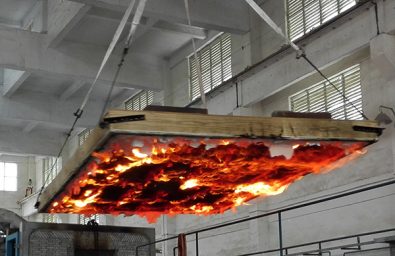
Fire resistance is to assess the behavior of an element of building construction when subjected to defined heating and pressure conditions.
The Fire Resistance Test provides a means of quantifying the ability of an element to withstand exposure to high temperatures, by setting criteria by which the loadbearing capacity, the fire containment(integrity) and the thermal transmittance(Insulation) functions and be adjudged.
Fire Resistance Testing to
Building Construction
British Standards:
- BS 476-20:Fire Tests on Building materials and structures – Part 20. Method of test for determination of the fire resistance of elements of construction (General principles)
- BS 476-21: Fire test on building materials and structures-Part 21: Method for Determination of the fire resistance of load bearing elements of construction.
- BS 476-22: Fire Tests on Building materials and structures – Part 22.Methods for determination of the fire resistance of non-loadbearing elements of construction
- BS 476-23:Fire Tests on Building Materials and Structures Part 23 Methods for Determination of the Contribution of Components to the Fire Resistance of a Structure
European Standards:
- EN13501-2: Fire classification of construction products and building elements-Part 2: Classification using data from fire resistance tests, excluding ventilation services
- EN 1363-1: Fire resistance tests – Part 1: General requirements.
- EN 1363-2: Fire resistance tests – Part 2: Alternative and additional procedures.
- EN 1364-1: Fire resistance tests for non-loadbearing elements – Part 1: Walls.
- EN 1364-2: Fire resistance tests for non-loadbearing elements – Part 2: ceiling.
- EN 1365-2: Fire resistance tests for loadbearing elements – Part 2: Floors and roofs.
- EN 1634-1: Fire resistance tests for door and shutter assemblies– Part 1: Fire doors and shutters.
American Standards:
- ASTM E 119 Standard Test Methods for Fire Tests of Building Construction and Materials
- UL 263 Fire Tests of Building Constriction and Material
- UL 10B Fire Test of Door Assemblies
- UL 10C Standard for positive pressure fire tests of door assemblies
ISO Standards
- ISO 834-1:Fire-resisitance tests – Elements of building construction Part 1: general requirements
Australian Standards:
- AS/NZS 1530.4:Methods for fire tests on building materials, components and structures – Fire-resistance test of elements of construction
Chinese Standards:
- GB/T 9978-1 Fire-resistance tests-Elements of building construction-part1:General requirement
- GB/T 9978-3 Fire-resistance tests-Elements of building construction-part3:Commentary on test method and test data application.
- GB/T 9978-5 Fire-resistance test-Elements of building construction- Part 5:Specific requirements for loadbearing horizontal separating elements.
- GB/T 9978-6 Fire-resistance test-Elements of building construction- Part 6: Specific requirements for beams.
- GB/T 9978-8 Fire-resistance test-Elements of building construction- Part 8:Specific requirements for non-Loadbearing vertical separating elements
- GB/T 9978-9 Fire-resistance test-Elements of building construction- Part 9: Specific requirements for non-Loadbearing ceiling elements
- GB/T 7633:Fire resistance tests for Door and shutters.
- GB/T 12513:Fire-resistance tests-Elements of building construction- Glazed elements.
- GB 12955:Fire resistance tests for fire door.
- GB 14102:Fire resistance tests for fire resistant shutter.
- GB 15763.1:Safety glazing materials in building-part 1: Fire-resistant glass.
- GB 16809:Fire-resistance tests-Elements of building construction- Steel fire windows.
- GB/T 24573:Fire resistance tests for coffers and Archives door.
- GA 97:Fire Tests on Building materials and structures –Fire-resistant glass of non-loadbearing elements of construction
- GB 16807:Resistance test for fire intumescent seals
- GB 23864 Firestop material
